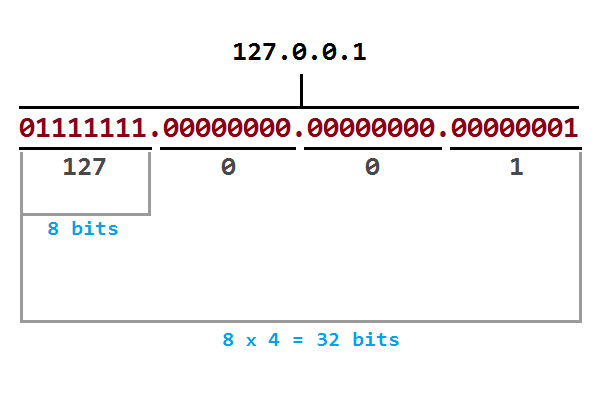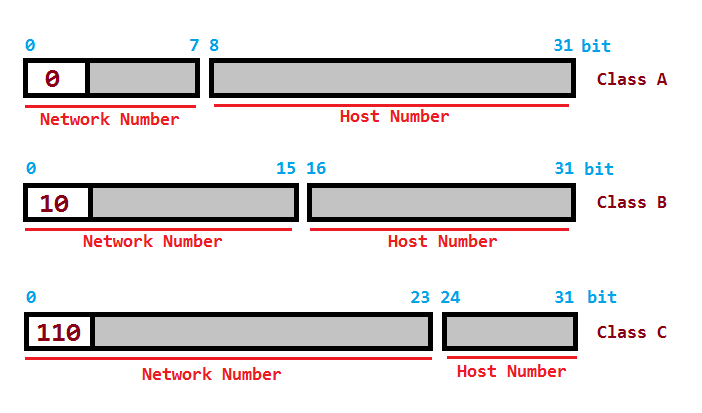IP Addresses:
Each computer on a TCP/IP What is TCP/IP? based network (including the internet) has a unique, numeric address called an IP (Internet Protocol) address, enabling data packages to be addressed to this specific recipient.

An IP address consists of four so-called octets separated by dots. An octet is a binary number of eight digits, which equals the decimal numbers from 0 to 255. To make IP addresses easier to read and write, they are often expressed as four decimal numbers each separated by a dot. This format is called "dotted-decimal notation".
In a LAN based on TCP/IP, an IP address must be assigned to each host (computer or device) in the network. The IP address must be unique to each host.
Note: If two hosts were given the same address, the data to these hosts would be picked up randomly by one of them - be it the intended receiver or not - causing network irregularities.
1. IPv4 Addresses: These are 32-bit numerical addresses expressed in a 4-part dotted-decimal format (e.g., 192.168.1.1). Each part represents 8 bits, ranging from 0 to 255.
2. IPv6 Addresses: These are 128-bit hexadecimal addresses expressed in 8 groups of 4 hexadecimal digits separated by colons (e.g., 2001:0db8:85a3:0000:0000:8a2e:0370:7334). IPv6 allows for a significantly larger address space compared to IPv4.
Classes of IP Addresses:
In order to provide the flexibility required to support differently sized networks, IP addresses come in three classes - A, B, and C. Every class fixes the boundary between the network portion and the host portion of the IP address at a different point. This makes them appropriate for different size networks.
Class C addresses allow 254 hosts per network and are typically used by smaller and middle-sized companies. Class B networks a maximum of 16,384 hosts, while Class A networks allow more than 16 million hosts. As a consequence, Class A networks are only used by large organizations.
Calculating the number of possible hosts requires a closer look at the IP classes in their binary form. (The binary system is a base-2 number system, just like the base-10 number system is known as the decimal number system.) It is done as follows :
- in a Class C network, only the last octet is used to designate the hosts. the maximum decimal number that you can write using eight bits is 256 (28). The host calculation now requires that 2 is subtracted because two host addresses must be reserved for a network address and a broadcast address (for a further explanation of network and broadcast addresses, see the section on 'Subnets'). Ergo, the maximum number of hosts on a class C network is 256-2=254.
- A class B network allows a maximum of 16,384 hosts(216-2) per network (three octets are used to designate the hosts).

| Class | Leading bits | Start address | End address |
|---|---|---|---|
| A | 0 | 0.0.0.0 | 127.255.255.255 |
| B | 10 | 128.0.0.0 | 191.255.255.255 |
| C | 110 | 192.0.0.0 | 223.255.255.255 |
Note: Understanding these concepts is crucial for network administrators, as they form the backbone of the internet's addressing system and network management strategies.
What's Next?
We've now entered the finance section on this platform, where you can enhance your financial literacy.